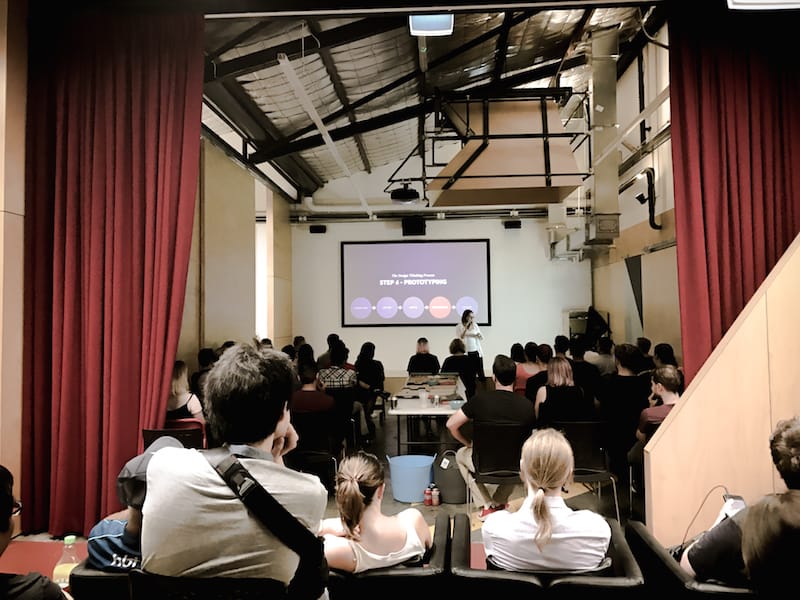Kristy is a multidisciplinary UI/UX designer. For the past 14 years, she has worked in agencies and studios across the globe in Perth, Melbourne, Sydney and London. She's also worked with high-profile brands such as Jeep, Fiat, Alfa Romeo, Virgin Super, Synergy, iiNet, HBF, KPMG and several more.
Her passion lies in creating human-centered, innovative digital products that are beautiful and easy to use. Kristy currently works as the lead designer at Meerkats, where she creates digital products and experiences that engage, delight and enrich people's lives.
“Design thinking” is something that’s been generating a lot of attention in the industry right now. What is it? Why is it useful? Is it just for designers? How can you use it to create innovative solutions for your clients? Here’s my recap of Kristy’s 6 Steps of Design Thinking:
Observe and Empathise
These are key in determining and understanding your users. Kristy noted how many of the companies she’d work for would conduct field research by going out and seeing their audiences interact with their environment. It’s paramount to observe and empathise with the end user.
Define the Problem in a Human Voice
To truly understand an issue and share it with others, it’s important to stay with the brief in the realms of human conviction. While buzzwords are nifty, key statements need to be human centric.
Ideation - Bang Out those Ideas
Produce as many ideas as possible; don’t stop. Kristy named this the hardest part of the process but provided a multitude of ways to conjure as many ideas as possible, they included;
- Keep going, often your first idea is never your best so don’t rush to an immediate solution
- Ideation is a team sport, get others involved
- Mash things together – literally pick two different ideas and aim to combine them in order to push your boundaries
- E-Storm, ask for brain storming help online, reach out to online community groups, forums, Facebook, Twitter – anywhere
- Brainstorm, remember to be non-judgmental, embrace the crazy and keep to the issue; try to be visual and approach the task with a quantity of quality mindset
Prototype
Build something rough and rapid; build it in order to think, see and interact with your ideas. Receive feedback and fail early to succeed sooner.
Iteration
Repeat prototyping and ideation again and again, experiment your way forward. Remember to always consider the feasibility, viability and desirability of your final product.
Implement
Send your product out to the world. Reflect.
By harnessing the powers of strategic approaches to thinking there’s possibility for true innovation, a summit that is seemingly becoming harder and harder to reach. These six steps of design thinking are gaining momentum in many industries, though have a way to go towards general acceptance. Perhaps by incorporating these tactics in your own processes a real difference can be made for the future.
Kristy has shared some excellent resources, as promised.
Thanks Kristy! You were awesome.
Credits:
Videography and Editing: Urvin Seeburuth


